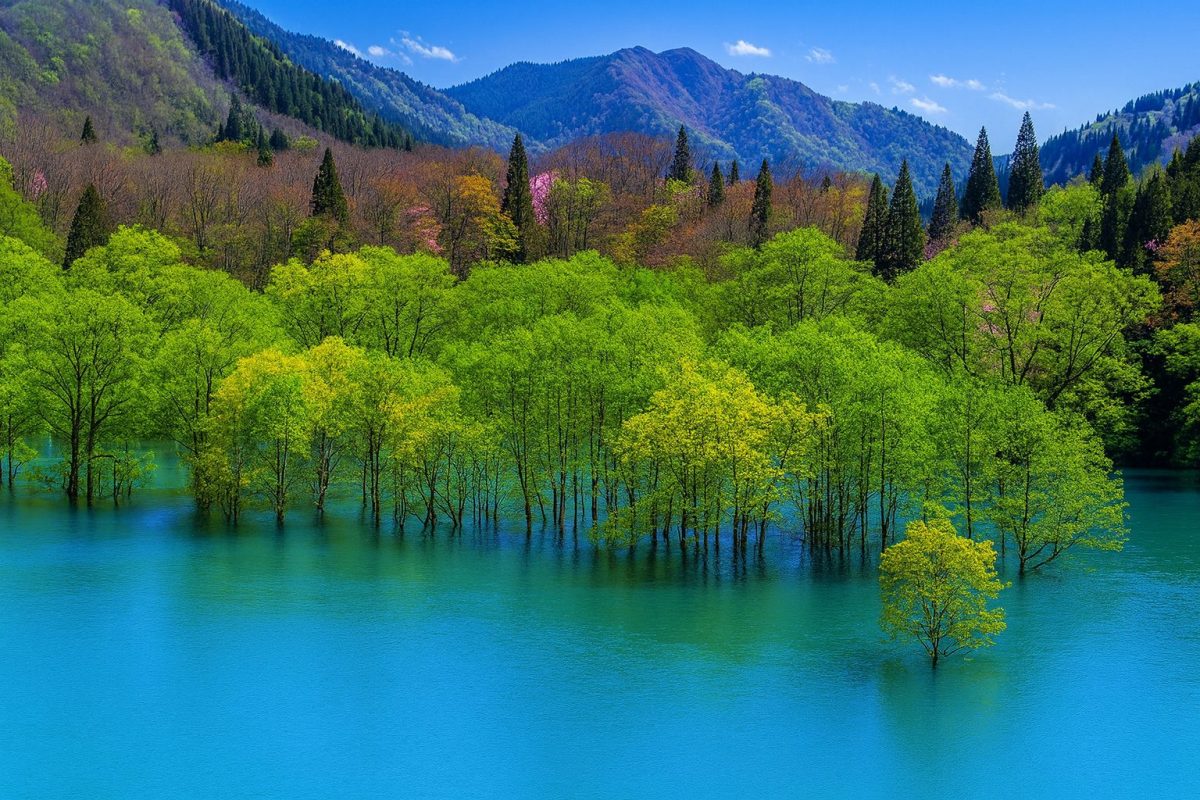| population | 1,113 peoples |
|---|---|
| area | 246.2 km² |
| population density | 4.52 peoples/km² |
Nishimeya Village, located in the southwestern part of Aomori Prefecture, is the sole municipality of Nakatsugaru District and serves as one of the primary gateways to the World Natural Heritage Site, Shirakami-Sanchi. The village was established in 1889 with the enforcement of the municipal system, and most of its land is covered by the rich natural environment of the Shirakami mountain range. Pristine beech forests, crystal-clear streams, and dramatic mountains form an untouched landscape that attracts visitors throughout the year. Popular destinations such as the Anmon Falls and Tsugaru Dam (Lake Tsugaru-Shirakami) highlight the dynamic natural beauty of the area. Daily life in Nishimeya Village is closely connected to nature, and strong ties within the local community continue to shape its culture. The Tsugaru dialect remains widely spoken, creating a unique linguistic and cultural flavor that enriches village life. The Shirakami-Sanchi Visitor Center, located within the village, provides educational exhibits and events to help visitors understand the significance of this globally important natural environment. With its harmony of history, culture, and lush landscapes, Nishimeya Village offers a peaceful and deeply enriching experience for all who visit.
Culture & Traditions
The culture of Nishimeya Village is deeply rooted in the relationship between its residents and the surrounding natural environment. As part of the Shirakami-Sanchi area, the village has long embraced a lifestyle that respects and coexists with nature. Traditional customs and local events continue to thrive, supported by strong community bonds. The Tsugaru dialect is used in daily life, adding warmth and character to local conversations. The village holds a variety of educational and environmental activities, including seasonal nature tours and programs at the Shirakami-Sanchi Visitor Center, which help both residents and visitors appreciate the ecological value of the region. Through its traditions and way of life, Nishimeya Village maintains a cultural identity shaped by centuries of history and the protection of its natural heritage.
Local Specialties
- Meyadolls (Meya Ningyo): A traditional handicraft designated as a National Traditional Craft by the Ministry of Economy, Trade and Industry. These hand-carved wooden dolls are simple yet expressive, representing the village’s rich cultural heritage.
- Processed foods using pristine Shirakami water: Local tofu and handmade foods created with the pure mountain water sourced from Shirakami’s beech forests are highly regarded for their clean flavor and freshness.
- Locally grown vegetables: Fresh vegetables cultivated in the cool mountain climate are known for their rich taste and are available at local direct-sales markets.
Annual Events
- Shirakami Beech Forest Nature Walks: Guided walks held from spring to autumn that explore Anmon Falls and the Shirakami beech forest trails, offering visitors an opportunity to experience the World Heritage ecosystem up close.
- ANMON Summer Opening Event: Held at Aqua Green Village ANMON to celebrate the start of the summer season. Activities include nature workshops, camping, and river play, making it popular among families.
- Tsugaru Dam Anniversary Event: An event commemorating the dam’s construction, featuring guided tours, lakeside walks, and educational programs.
Access
-
By Train: The nearest station is Hirosaki Station (JR Ōu Main Line / Konan Railway). From the station, Konan Bus services run to “Nishimeya Village Hall.”
Hirosaki Station (Google Maps) -
By Bus: Direct Konan Bus services connect Hirosaki Station to the center of Nishimeya Village in approximately 40 minutes.
Nishimeya Village Hall (Google Maps) - By Car: From the Tohoku Expressway, exit at Owani-Hirosaki IC and drive approximately 40 minutes via national and prefectural routes.
Tourist Attractions
- Shirakami-Sanchi – A UNESCO World Natural Heritage Site renowned for its expansive untouched beech forests.
- Anmon Falls – A dramatic three-tiered waterfall, accessible via scenic walking trails.
- Shirakami-Sanchi Visitor Center – An educational facility offering exhibits about the region’s nature, history, and conservation efforts.
- Aqua Green Village ANMON – A nature activity complex with cottages, campsites, and river recreation areas.
- Tsugaru Dam (Lake Tsugaru-Shirakami) – A scenic dam lake surrounded by mountains, ideal for walking the lakeside paths and enjoying panoramic views.
